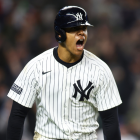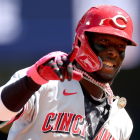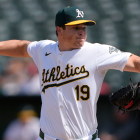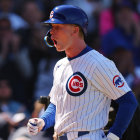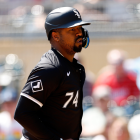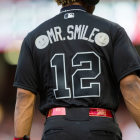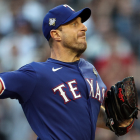PORT CHARLOTTE, Fla. -- One of the few immutable rules of baseball is this: Don’t use the L-word.
Every team suffers injuries. Every team must deal with bad timing. Every team will have some breakdowns, no matter how well they prepare and how great their talent might be. So whatever you do, don’t blame your struggles on luck.
That is, unless you’re Kevin Cash, and you just witnessed what happened to the 2016 Rays.
On June 15 of last season, the Rays’ record stood at a respectable 31-32. Their young and talented pitching staff wasn’t perfect, but it was flashing signs of excellence. Franchise player Evan Longoria was in the midst of a huge bounceback season after slipping the previous couple of years. They’d won three games in a row and eight out of 10, sitting 5 1/2 games out of first place. After two sub-.500 seasons in a row, maybe 2016 would be the year the Rays return to their winning ways.
Then, catastrophe struck. The starting rotation fell apart all at once, getting shelled on a nightly basis. The loss of Gold Glove center fielder Kevin Kiermaier a couple weeks earlier strained the defense, which started unraveling, further hurting the pitching staff. The bullpen, forced to soak up too many innings as starters kept getting knocked out early, also melted down. The offense suddenly stopped scoring, not because the Rays hitters couldn’t hit, but because they suddenly couldn’t bunch together multiple hits in the same inning to save their lives.
Add up all those factors all at once -- a talented rotation suddenly gone cold, arguably the best defensive player at any position in baseball hitting the disabled list, an offense with decent talent suddenly unable to cluster hits together -- and, well...
“To me that’s kind of just unlucky,” Cash said.
Neither the Rays manager nor any other member of its brain trust puts all of the blame for last year’s nosedive on luck, of course. Still, the numbers do support the claim that ill fortune played a significant role. Neither pitchers nor hitters can control when hits occur, specifically if they’re clustered into one inning or spread out over the course of a game. Ed Feng of The Power Rank thus refers to the trend of hit clustering as “Cluster Luck” -- by that measure the Rays ranked 22nd overall and 27th offensively last season.
Strip out that kind of statistical noise and other, similar measures of luck and we can get a better read on what kind of team the Rays were last year. Per Base Runs, a metric that measures how many runs a team would have scored and allowed based on component stats and not influenced by random variance, the 68-win Rays could’ve been expected to win...81 games.
Even if we acknowledge the role that variance played in the Rays’ 2016 fortunes, there’s no guarantee that Tampa Bay can field a contender, or even a team that wins 81 games, in 2017.
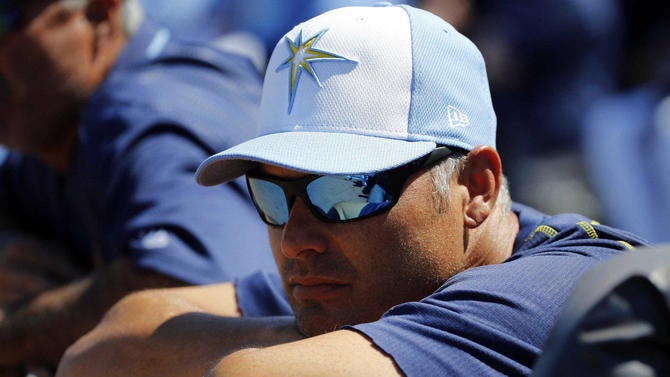
For starters, the team’s offseason moves pointed clearly to a longer-term plan. One of the team’s biggest moves this winter was the trade of Logan Forsythe to the Dodgers. By dealing Forsythe, the Rays gave up one of the best all-around second basemen in baseball. Longoria and other Rays expressed disappointment over losing one of the team’s best players and appreciated teammates. But the deal fit with a forward-thinking approach. Forsythe is 30 years old and offers two years of team control. The player the Rays acquired for him, Jose De Leon, is 24 years and can be kept for six.
Then there’s the Wilson Ramos deal. A serviceable catcher who never dazzled with the bat, Ramos had LASIK surgery after the 2015 season, then exploded in 2016. The suddenly sighted veteran set career highs in games played, homers, runs scored, RBI, batting average, on-base percentage, and slugging, making his first All-Star team in the process. Only problem is, Ramos suffered a knee injury which now figures to keep him out well past Opening Day, with estimates for his return ranging from May to July, and a likelihood that he’ll be limited to DH duties for a while even once he’s back on the field. Where other teams saw a problem, the Rays saw an opportunity: The injury allowed the frugal Rays to sign an All-Star catcher in his prime to a dirt-cheap two-year, $12.5 million deal. Even if Ramos’ best moments come a year from now, having him on board builds yet more optimism for 2018.
Wait, there’s more. As Tampa Bay Times writer Marc Topkin recently noted, the Rays have only four players on their 40-man roster older than 30. And in the spirit of their constant quest to develop talent, then get value for those players before they get too old or expensive, only three players on the 40-man made their Rays debut prior to 2013: Longoria, Alex Cobb, and Chris Archer.
Though the Rays’ budget-watching is responsible for much of that turnover, save some blame for a long string of horrendous drafts and mostly fruitless forays into the international market. In 2008, the Rays could’ve drafted Buster Posey to take a short trip down the road from his college digs in Tallahassee... they drafted Tim Beckham first overall instead. The World Series run of 2008 marked the end of top-of-the-board picks, but LeVon Washington, Josh Sale, and Richie Shaffer were all major first-round whiffs. In 2011, the Rays had a chance to stock their system for years to come, with a once-in-a-lifetime setup of 11 picks by the end of the second round. Blake Snell will be in this year’s major league rotation on Opening Day and that year’s no. 24 overall pick Taylor Guerrieri has a chance to make his major league mark down the road. Still, that’s a woefully light haul given the circumstances.
“The issue is that if things don’t go the way you want in the draft or internationally, you don’t necessarily see the effects of that until 5 or 6 years out,” said Senior Vice President of Baseball Operations Chaim Bloom (he’s really the co-GM along with Erik Neander, but the Rays love to use wonky titles). That math checks out: After the Rays ran off four playoff berths in six years, they’ve averaged 87 losses a year over the past three. That run of losing seasons started six years after that first badly botched draft.
The good news is that the Rays have finally started to assemble a deep group of minor league talent that could make an impact in the majors fairly soon. Bloom rattled off a long list of players who should spend time at the Triple-A level this season (and in some cases maybe make their MLB debuts too): top prospect Willy Adames, as well as Daniel Robertson, Casey Gillaspie, and Jake Bauers on the hitting side, plus a long list of talented pitchers that should include De Leon, Jacob Faria, Chih-Wei Hu, and Brent Honeywell, plus bullpen power arms Jaime Schultz and Ryne Stanek. Add to that list 2016 underachievers like Corey Dickerson (who moved from the NL West to AL East, from outfield to DH, and from Coors Field to Tropicana Field) and Steven Souza Jr. (who’s battled injuries the past two years), and Bloom sees multiple sources of upside, beyond the continued excellence of Longoria and Kiermaier, and the copious talent in the rotation.

There are other, subtler reasons for optimism, many of those kept under intellectual property-guarding lock and key. The Rays have spent lots of time studying the impact of external factors such as nutrition and sleep patterns, and have done little things like invest in better food at multiple levels and push back spring workout start times as a result. They’ve got teams of data crunchers and medical staff working to find small advantages that could lead to better player health, evoking the Rays’ glory years when the rotation went a shocking two and a years without a single DL stint. More broadly, they’re contemplating the best rebuilding paths, keeping on eye on teams that bottomed out before getting good again like the Astros, and for now sticking to less drastic methods which include keeping Longoria in the hopes that he can be the veteran leader on the next contending team in Tampa Bay.
Said Cash: “From the players that are coming to the core group of players that we control for a period of time, there’s a lot to be excited about.”
Just maybe temper that excitement a bit, at least for another year.














